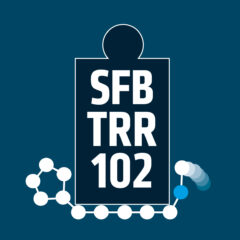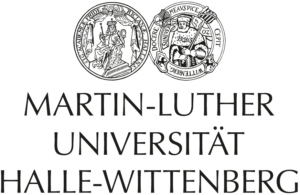Molecular dynamics simulations of polyQ14: structural and spectroscopic parameters
Polyglutamine proteins (PolyQ) are members of a big family of intrinsically disordered proteins or IDPs. Very flexible as monomers in solutions PolyQs tend to aggregate and form amyloid fibrils which were shown to be neurodegenerative. [1]
In our work we have investigated structure and dynamics of monomer PolyQ protein with 14 sequential glutamine residues in water using classical molecular dynamics simulations. We used enhanced method of MD (REST2) [2] in combination with Markov state model based analysis (TRAM) [2]. This combination allowed us to extract not only equilibrium geometries distribution from trajectories. But also gave us access to kinetic information about slow processes that lie in nanoseconds range, for example loop formation. Our findings show good agreement with experimental results obtained by TTET and FRET spectroscopies.
Literature:
- Kim, S., Morley, J. F., Ben-Zvi, A. and Morimoto, R. I. Polyglutamine Aggregates as a Model for Protein-misfolding Diseases, in Protein Folding Handbook (eds J. Buchner and T. Kiefhaber), 2005 Wiley-VCH Verlag GmbH, Weinheim, Germany.
- Wang, L., Fresner, R. A., Berne, B. J. Replica Exchange with Solute Scaling: A More Efficient Version of Replica Exchange with Solute Tempering (REST2), J. Phys. Chem. B, 2011, 115 (30), pp 9431–9438.
- Wu, H., Paul, F., Wehmeyer, C., Noé, F., Multiensemble Markov models of molecular thermodynamics and kinetics, PNAS, 2016, 113 (23), E3221-E3230
Location: VDP3 SR 1.03, Martin Luther University Halle-Wittenberg





2 thoughts on “Talk by S. Pylaeva at MLU (October 18th 2016)”